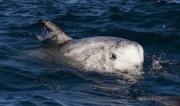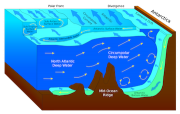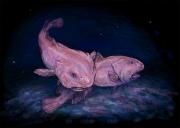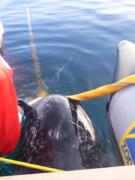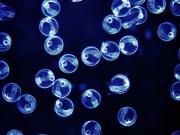Radio Program
Our regular Science and the SeaTM radio program presents marine science topics in an engaging two-minute story format. Our script writers gather ideas for the radio program from the University of Texas Marine Science Institute's researchers and from our very popular college class, Introduction to Oceanography, which we teach to hundreds of non-science majors at The University of Texas at Austin every year. Our radio programs are distributed at to commercial and public radio stations across the country.
Jamaica Bay, on the southern edge of Long Island, is getting a little rough around the edges. Changes in the salt marshes around the bay have left them more vulnerable to erosion. That could expose the land behind them to more flooding as sea level gets higher. And it could damage the habitat of hundreds of species of birds, fish, and other creatures that live in and around the bay.
For more than two decades around the start of the 20th century, Pelorus Jack was a constant companion to ships traveling through a dangerous passage on the coast of New Zealand. Some said the Risso’s dolphin actually guided the vessels to safety. And when a sailor supposedly tried to shoot Pelorus Jack, the government passed a law protecting him.
The oceans are like giant storage batteries -- they store heat that’s transferred from the atmosphere. One of the biggest batteries may form a ring outside Antarctica. And a recent study says it’s charging up with more heat than ever -- thanks in part to stronger winds.
Subantarctic Mode Water is found in the Southern Ocean, as well as parts of the Atlantic, Pacific, and Indian oceans.
The Greenland shark can measure 16 feet or longer. But it takes a long time to reach that size. In the cold North Atlantic, the creatures grow slowly -- a fraction of an inch per year. That means the oldest Greenland sharks could be centuries old -- the longest-living vertebrates on the planet.
Recent studies have shown that several species of shark can live much longer than expected.
Several groups in Louisiana are building pre-fab apartment complexes for oysters. There are lots of vacancies, and the rent is free. Well, almost free. In exchange for living space, the oysters protect the coastal wetlands from erosion, rising sea level, and other hazards.
Its name alone tells you that the blobfish isn’t going to win any beauty contests. In fact, a few years ago it won an ugly contest -- it was declared the ugliest animal on the planet. That’s a bit misleading, though: No one is going to look their best if they’ve just been hauled up from far below the ocean waves.
The blobfish is found off the coast of Australia and the island of Tasmania, at depths of about 2,000 to 4,000 feet. In this natural habitat, it looks a bit like a cartoon character. It has a wide, round head, and a tapered body that can reach about a foot in length.
The narwhal looks like something out of mythology. Males have a long, spiral tusk that’s earned them the nickname “the unicorn of the sea.” The narwhal sounds a bit fictional, too -- a bit like a droid from Star Wars.
Researchers recorded the sounds of the East Greenland narwhal. It’s found in a fjord on the central eastern coast of Greenland.
1969 was a big year for going places. Hundreds of thousands of music fans went to the Woodstock festival in New York. Three sets of astronauts went to the Moon. And on February 15th, four “aquanauts” went deep. They began a visit to a habitat 50 feet below the surface of Great Lameshur Bay in the U.S. Virgin Islands.
The giant clam has had a bit of an image problem: It’s been considered a killer. The largest species can weigh more than 400 pounds, and it can span four feet. According to legends in the South Pacific and Indian oceans, the clam sometimes drowns divers by clamping down on them with its giant maw.
The egg of a red drum, a popular sport fish, is only about the size of a pinhead. Yet those tiny eggs can play a big role in the ecology of bays and estuaries.
Some eggs will hatch into new red drum. But most of the eggs -- about 90 percent -- will be eaten by other organisms. The eggs supply key nutrients, including essential fatty acids, which are needed for proper growth and development. In fact, the eggs appear to be an important source of these compounds for much of the marine food chain.


